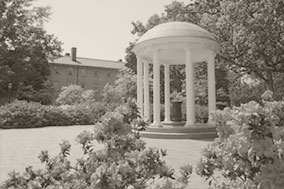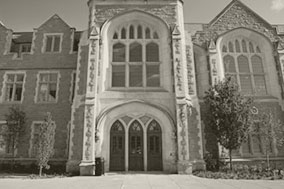Project Examples
The Art & Science staff vivamus a diam arcu, ut lacinia ipsum. Proin id pellentesque erat. Nullam mattis, ipsum et porttitor pellentesque, diam erat commodo lectus, ac tristique metus arcu condimentum purus. Suspendisse fermentum ornare justo, posuere egestas lacus cursus a.
All
Branding
Advancement- Strategic
Planning - Pricing and
Financial Aid - Independent
Schools - Law
Schools - Other
Services
Branding
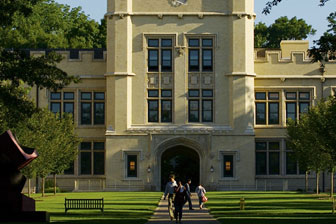
College of Wooster
Art & Science helped the College understand the appeal of and ways to strengthen the marketing of its signature academic program — Independent Study (IS) — to prospective students.
Client Challenge
Wake Forest University, among the nation’s top 30 research universities, was considering growing undergraduate enrollment. Wake’s leadership wanted to ensure that enrollment growth would not compromise the quality of students choosing the University or the quality of undergraduate students’ academic and personal experience. Another concern was the financial impact of various enrollment growth scenarios.
Our Approach
The first phase of the project involved developing a number of models to predict the cost of various enrollment growth scenarios in terms of faculty, administrative staff, facilities, and net tuition revenue.
We also conducted highly sophisticated research with non-inquirers, inquirers, and admitted applicants. This research enabled us to develop a predictive model that measured the impact on application conversion rates, yield, student quality, diversity, and net tuition revenue of a number planning initiatives and ideas, including branding strategies, and student-faculty collaboration.
The Results
The feasibility and enrollment study demonstrated conclusively that Wake Forest was in an unusually strong position to grow enrollment without compromising student quality or diversity. Moreover, the University had the flexibility to make changes in its price and aid to increase net revenue without adverse consequences for admissions and enrollment.
As a result of this collaboration and University planning efforts, Wake grew enrollment by 10 percent, created a new admissions welcome center, and built new residence halls. Furthermore, it repositioned itself, based on our recommendations, as the “collegiate university,” an institution that balances the personal attention of a liberal arts college with the academic vitality and broad opportunities of a research university with strong professional schools.

World Learning
Art & Science assisted World Learning, a leader in providing country-based experiential study abroad programs, in the development of a stronger identity and recommended communications strategies to gain the interest and support of past participants.
Client Challenge
Wake Forest University, among the nation’s top 30 research universities, was considering growing undergraduate enrollment. Wake’s leadership wanted to ensure that enrollment growth would not compromise the quality of students choosing the University or the quality of undergraduate students’ academic and personal experience. Another concern was the financial impact of various enrollment growth scenarios.
Our Approach
The first phase of the project involved developing a number of models to predict the cost of various enrollment growth scenarios in terms of faculty, administrative staff, facilities, and net tuition revenue.
We also conducted highly sophisticated research with non-inquirers, inquirers, and admitted applicants. This research enabled us to develop a predictive model that measured the impact on application conversion rates, yield, student quality, diversity, and net tuition revenue of a number planning initiatives and ideas, including branding strategies, and student-faculty collaboration.
The Results
The feasibility and enrollment study demonstrated conclusively that Wake Forest was in an unusually strong position to grow enrollment without compromising student quality or diversity. Moreover, the University had the flexibility to make changes in its price and aid to increase net revenue without adverse consequences for admissions and enrollment.
As a result of this collaboration and University planning efforts, Wake grew enrollment by 10 percent, created a new admissions welcome center, and built new residence halls. Furthermore, it repositioned itself, based on our recommendations, as the “collegiate university,” an institution that balances the personal attention of a liberal arts college with the academic vitality and broad opportunities of a research university with strong professional schools.

State University of New York
Institute of Technology at Utica/Rome
Art & Science helped SUNYIT develop a marketing recruitment plan to enroll freshmen and establish a stronger market position as the institution made the transition from an Upper Division school to a four-year institution.
Client Challenge
Wake Forest University, among the nation’s top 30 research universities, was considering growing undergraduate enrollment. Wake’s leadership wanted to ensure that enrollment growth would not compromise the quality of students choosing the University or the quality of undergraduate students’ academic and personal experience. Another concern was the financial impact of various enrollment growth scenarios.
Our Approach
The first phase of the project involved developing a number of models to predict the cost of various enrollment growth scenarios in terms of faculty, administrative staff, facilities, and net tuition revenue.
We also conducted highly sophisticated research with non-inquirers, inquirers, and admitted applicants. This research enabled us to develop a predictive model that measured the impact on application conversion rates, yield, student quality, diversity, and net tuition revenue of a number planning initiatives and ideas, including branding strategies, and student-faculty collaboration.
The Results
The feasibility and enrollment study demonstrated conclusively that Wake Forest was in an unusually strong position to grow enrollment without compromising student quality or diversity. Moreover, the University had the flexibility to make changes in its price and aid to increase net revenue without adverse consequences for admissions and enrollment.
As a result of this collaboration and University planning efforts, Wake grew enrollment by 10 percent, created a new admissions welcome center, and built new residence halls. Furthermore, it repositioned itself, based on our recommendations, as the “collegiate university,” an institution that balances the personal attention of a liberal arts college with the academic vitality and broad opportunities of a research university with strong professional schools.
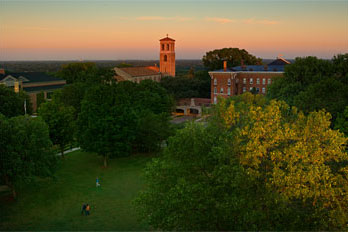
St. Catherine University
After leadership voted to change the name of the College of St. Catherine to St. Catherine University, our firm was retained to conduct a marketing/positioning study to help strengthen the institution’s position as a comprehensive university.
Client Challenge
Wake Forest University, among the nation’s top 30 research universities, was considering growing undergraduate enrollment. Wake’s leadership wanted to ensure that enrollment growth would not compromise the quality of students choosing the University or the quality of undergraduate students’ academic and personal experience. Another concern was the financial impact of various enrollment growth scenarios.
Our Approach
The first phase of the project involved developing a number of models to predict the cost of various enrollment growth scenarios in terms of faculty, administrative staff, facilities, and net tuition revenue.
We also conducted highly sophisticated research with non-inquirers, inquirers, and admitted applicants. This research enabled us to develop a predictive model that measured the impact on application conversion rates, yield, student quality, diversity, and net tuition revenue of a number planning initiatives and ideas, including branding strategies, and student-faculty collaboration.
The Results
The feasibility and enrollment study demonstrated conclusively that Wake Forest was in an unusually strong position to grow enrollment without compromising student quality or diversity. Moreover, the University had the flexibility to make changes in its price and aid to increase net revenue without adverse consequences for admissions and enrollment.
As a result of this collaboration and University planning efforts, Wake grew enrollment by 10 percent, created a new admissions welcome center, and built new residence halls. Furthermore, it repositioned itself, based on our recommendations, as the “collegiate university,” an institution that balances the personal attention of a liberal arts college with the academic vitality and broad opportunities of a research university with strong professional schools.

University of Chicago
University of Chicago leadership retained our firm to help the institution better understand its competitive position vis-a-vis other selective institutions.
Client Challenge
Wake Forest University, among the nation’s top 30 research universities, was considering growing undergraduate enrollment. Wake’s leadership wanted to ensure that enrollment growth would not compromise the quality of students choosing the University or the quality of undergraduate students’ academic and personal experience. Another concern was the financial impact of various enrollment growth scenarios.
Our Approach
The first phase of the project involved developing a number of models to predict the cost of various enrollment growth scenarios in terms of faculty, administrative staff, facilities, and net tuition revenue.
We also conducted highly sophisticated research with non-inquirers, inquirers, and admitted applicants. This research enabled us to develop a predictive model that measured the impact on application conversion rates, yield, student quality, diversity, and net tuition revenue of a number planning initiatives and ideas, including branding strategies, and student-faculty collaboration.
The Results
The feasibility and enrollment study demonstrated conclusively that Wake Forest was in an unusually strong position to grow enrollment without compromising student quality or diversity. Moreover, the University had the flexibility to make changes in its price and aid to increase net revenue without adverse consequences for admissions and enrollment.
As a result of this collaboration and University planning efforts, Wake grew enrollment by 10 percent, created a new admissions welcome center, and built new residence halls. Furthermore, it repositioned itself, based on our recommendations, as the “collegiate university,” an institution that balances the personal attention of a liberal arts college with the academic vitality and broad opportunities of a research university with strong professional schools.
Advancement

University of South Florida
Our firm worked with the USF Alumni Association on an alumni study focused on exploring how to create greater affinity among USF graduates and connect more deeply with alumni in the Tampa Bay region and beyond.
Client Challenge
Wake Forest University, among the nation’s top 30 research universities, was considering growing undergraduate enrollment. Wake’s leadership wanted to ensure that enrollment growth would not compromise the quality of students choosing the University or the quality of undergraduate students’ academic and personal experience. Another concern was the financial impact of various enrollment growth scenarios.
Our Approach
The first phase of the project involved developing a number of models to predict the cost of various enrollment growth scenarios in terms of faculty, administrative staff, facilities, and net tuition revenue.
We also conducted highly sophisticated research with non-inquirers, inquirers, and admitted applicants. This research enabled us to develop a predictive model that measured the impact on application conversion rates, yield, student quality, diversity, and net tuition revenue of a number planning initiatives and ideas, including branding strategies, and student-faculty collaboration.
The Results
The feasibility and enrollment study demonstrated conclusively that Wake Forest was in an unusually strong position to grow enrollment without compromising student quality or diversity. Moreover, the University had the flexibility to make changes in its price and aid to increase net revenue without adverse consequences for admissions and enrollment.
As a result of this collaboration and University planning efforts, Wake grew enrollment by 10 percent, created a new admissions welcome center, and built new residence halls. Furthermore, it repositioned itself, based on our recommendations, as the “collegiate university,” an institution that balances the personal attention of a liberal arts college with the academic vitality and broad opportunities of a research university with strong professional schools.

Sweet Briar College
On the eve of a major capital campaign, the College retained our firm to conduct a comprehensive study focused on understanding what messages, initiatives, and plans would best motivate alumnae to make sizeable gifts to the College.
Client Challenge
Wake Forest University, among the nation’s top 30 research universities, was considering growing undergraduate enrollment. Wake’s leadership wanted to ensure that enrollment growth would not compromise the quality of students choosing the University or the quality of undergraduate students’ academic and personal experience. Another concern was the financial impact of various enrollment growth scenarios.
Our Approach
The first phase of the project involved developing a number of models to predict the cost of various enrollment growth scenarios in terms of faculty, administrative staff, facilities, and net tuition revenue.
We also conducted highly sophisticated research with non-inquirers, inquirers, and admitted applicants. This research enabled us to develop a predictive model that measured the impact on application conversion rates, yield, student quality, diversity, and net tuition revenue of a number planning initiatives and ideas, including branding strategies, and student-faculty collaboration.
The Results
The feasibility and enrollment study demonstrated conclusively that Wake Forest was in an unusually strong position to grow enrollment without compromising student quality or diversity. Moreover, the University had the flexibility to make changes in its price and aid to increase net revenue without adverse consequences for admissions and enrollment.
As a result of this collaboration and University planning efforts, Wake grew enrollment by 10 percent, created a new admissions welcome center, and built new residence halls. Furthermore, it repositioned itself, based on our recommendations, as the “collegiate university,” an institution that balances the personal attention of a liberal arts college with the academic vitality and broad opportunities of a research university with strong professional schools.
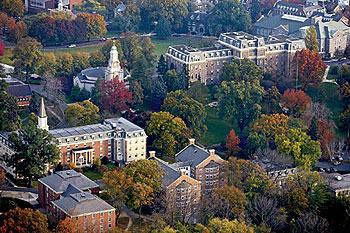
Lafayette College
Our firm helped the College explore and develop stronger messages and other initiatives to increase alumni giving to the Annual Fund, in particular, from the youngest classes.
Client Challenge
Wake Forest University, among the nation’s top 30 research universities, was considering growing undergraduate enrollment. Wake’s leadership wanted to ensure that enrollment growth would not compromise the quality of students choosing the University or the quality of undergraduate students’ academic and personal experience. Another concern was the financial impact of various enrollment growth scenarios.
Our Approach
The first phase of the project involved developing a number of models to predict the cost of various enrollment growth scenarios in terms of faculty, administrative staff, facilities, and net tuition revenue.
We also conducted highly sophisticated research with non-inquirers, inquirers, and admitted applicants. This research enabled us to develop a predictive model that measured the impact on application conversion rates, yield, student quality, diversity, and net tuition revenue of a number planning initiatives and ideas, including branding strategies, and student-faculty collaboration.
The Results
The feasibility and enrollment study demonstrated conclusively that Wake Forest was in an unusually strong position to grow enrollment without compromising student quality or diversity. Moreover, the University had the flexibility to make changes in its price and aid to increase net revenue without adverse consequences for admissions and enrollment.
As a result of this collaboration and University planning efforts, Wake grew enrollment by 10 percent, created a new admissions welcome center, and built new residence halls. Furthermore, it repositioned itself, based on our recommendations, as the “collegiate university,” an institution that balances the personal attention of a liberal arts college with the academic vitality and broad opportunities of a research university with strong professional schools.
Strategic Planning

Wake Forest University
Wake Forest leadership retained our firm to help them explore enrollment growth and its potential impact on undergraduate students’ academic and personal experience.
Client Challenge
Wake Forest University, among the nation’s top 30 research universities, was considering growing undergraduate enrollment. Wake’s leadership wanted to ensure that enrollment growth would not compromise the quality of students choosing the University or the quality of undergraduate students’ academic and personal experience. Another concern was the financial impact of various enrollment growth scenarios.
Our Approach
The first phase of the project involved developing a number of models to predict the cost of various enrollment growth scenarios in terms of faculty, administrative staff, facilities, and net tuition revenue.
We also conducted highly sophisticated research with non-inquirers, inquirers, and admitted applicants. This research enabled us to develop a predictive model that measured the impact on application conversion rates, yield, student quality, diversity, and net tuition revenue of a number planning initiatives and ideas, including branding strategies, and student-faculty collaboration.
The Results
The feasibility and enrollment study demonstrated conclusively that Wake Forest was in an unusually strong position to grow enrollment without compromising student quality or diversity. Moreover, the University had the flexibility to make changes in its price and aid to increase net revenue without adverse consequences for admissions and enrollment.
As a result of this collaboration and University planning efforts, Wake grew enrollment by 10 percent, created a new admissions welcome center, and built new residence halls. Furthermore, it repositioned itself, based on our recommendations, as the “collegiate university,” an institution that balances the personal attention of a liberal arts college with the academic vitality and broad opportunities of a research university with strong professional schools.
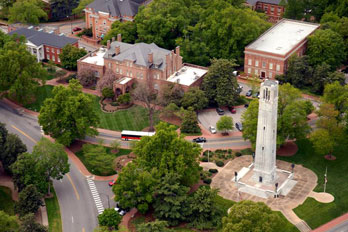
North Carolina State University
NC State chose Art & Science to help the institution learn more about the views and interests of its key constituents and to lead the University through a market-informed strategic planning process.
Client Challenge
Wake Forest University, among the nation’s top 30 research universities, was considering growing undergraduate enrollment. Wake’s leadership wanted to ensure that enrollment growth would not compromise the quality of students choosing the University or the quality of undergraduate students’ academic and personal experience. Another concern was the financial impact of various enrollment growth scenarios.
Our Approach
The first phase of the project involved developing a number of models to predict the cost of various enrollment growth scenarios in terms of faculty, administrative staff, facilities, and net tuition revenue.
We also conducted highly sophisticated research with non-inquirers, inquirers, and admitted applicants. This research enabled us to develop a predictive model that measured the impact on application conversion rates, yield, student quality, diversity, and net tuition revenue of a number planning initiatives and ideas, including branding strategies, and student-faculty collaboration.
The Results
The feasibility and enrollment study demonstrated conclusively that Wake Forest was in an unusually strong position to grow enrollment without compromising student quality or diversity. Moreover, the University had the flexibility to make changes in its price and aid to increase net revenue without adverse consequences for admissions and enrollment.
As a result of this collaboration and University planning efforts, Wake grew enrollment by 10 percent, created a new admissions welcome center, and built new residence halls. Furthermore, it repositioned itself, based on our recommendations, as the “collegiate university,” an institution that balances the personal attention of a liberal arts college with the academic vitality and broad opportunities of a research university with strong professional schools.
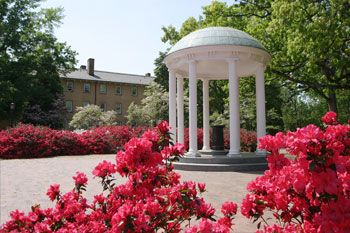
University of North Carolina
UNC-Chapel Hill engaged our firm to conduct a study to determine how the University could best grow enrollment and maintain student quality. The study’s findings and recommendations became the basis for a University-wide discussion and planning effort.
Client Challenge
Wake Forest University, among the nation’s top 30 research universities, was considering growing undergraduate enrollment. Wake’s leadership wanted to ensure that enrollment growth would not compromise the quality of students choosing the University or the quality of undergraduate students’ academic and personal experience. Another concern was the financial impact of various enrollment growth scenarios.
Our Approach
The first phase of the project involved developing a number of models to predict the cost of various enrollment growth scenarios in terms of faculty, administrative staff, facilities, and net tuition revenue.
We also conducted highly sophisticated research with non-inquirers, inquirers, and admitted applicants. This research enabled us to develop a predictive model that measured the impact on application conversion rates, yield, student quality, diversity, and net tuition revenue of a number planning initiatives and ideas, including branding strategies, and student-faculty collaboration.
The Results
The feasibility and enrollment study demonstrated conclusively that Wake Forest was in an unusually strong position to grow enrollment without compromising student quality or diversity. Moreover, the University had the flexibility to make changes in its price and aid to increase net revenue without adverse consequences for admissions and enrollment.
As a result of this collaboration and University planning efforts, Wake grew enrollment by 10 percent, created a new admissions welcome center, and built new residence halls. Furthermore, it repositioned itself, based on our recommendations, as the “collegiate university,” an institution that balances the personal attention of a liberal arts college with the academic vitality and broad opportunities of a research university with strong professional schools.
Pricing and Financial Aid
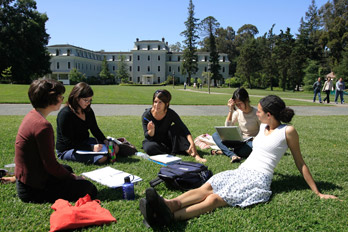
Mills College
Art & Science’s market research and recommendations helped Mills boost enrollments in a very short period of time by more strongly differentiating the College as a dynamic college for dynamic women.
Client Challenge
Wake Forest University, among the nation’s top 30 research universities, was considering growing undergraduate enrollment. Wake’s leadership wanted to ensure that enrollment growth would not compromise the quality of students choosing the University or the quality of undergraduate students’ academic and personal experience. Another concern was the financial impact of various enrollment growth scenarios.
Our Approach
The first phase of the project involved developing a number of models to predict the cost of various enrollment growth scenarios in terms of faculty, administrative staff, facilities, and net tuition revenue.
We also conducted highly sophisticated research with non-inquirers, inquirers, and admitted applicants. This research enabled us to develop a predictive model that measured the impact on application conversion rates, yield, student quality, diversity, and net tuition revenue of a number planning initiatives and ideas, including branding strategies, and student-faculty collaboration.
The Results
The feasibility and enrollment study demonstrated conclusively that Wake Forest was in an unusually strong position to grow enrollment without compromising student quality or diversity. Moreover, the University had the flexibility to make changes in its price and aid to increase net revenue without adverse consequences for admissions and enrollment.
As a result of this collaboration and University planning efforts, Wake grew enrollment by 10 percent, created a new admissions welcome center, and built new residence halls. Furthermore, it repositioned itself, based on our recommendations, as the “collegiate university,” an institution that balances the personal attention of a liberal arts college with the academic vitality and broad opportunities of a research university with strong professional schools.

Hendrix College
Art & Science’s work informed the development and launch of an engaged learning program for all students which became known as The Odyssey Program and strengthened the College’s net revenue position.
Client Challenge
Wake Forest University, among the nation’s top 30 research universities, was considering growing undergraduate enrollment. Wake’s leadership wanted to ensure that enrollment growth would not compromise the quality of students choosing the University or the quality of undergraduate students’ academic and personal experience. Another concern was the financial impact of various enrollment growth scenarios.
Our Approach
The first phase of the project involved developing a number of models to predict the cost of various enrollment growth scenarios in terms of faculty, administrative staff, facilities, and net tuition revenue.
We also conducted highly sophisticated research with non-inquirers, inquirers, and admitted applicants. This research enabled us to develop a predictive model that measured the impact on application conversion rates, yield, student quality, diversity, and net tuition revenue of a number planning initiatives and ideas, including branding strategies, and student-faculty collaboration.
The Results
The feasibility and enrollment study demonstrated conclusively that Wake Forest was in an unusually strong position to grow enrollment without compromising student quality or diversity. Moreover, the University had the flexibility to make changes in its price and aid to increase net revenue without adverse consequences for admissions and enrollment.
As a result of this collaboration and University planning efforts, Wake grew enrollment by 10 percent, created a new admissions welcome center, and built new residence halls. Furthermore, it repositioned itself, based on our recommendations, as the “collegiate university,” an institution that balances the personal attention of a liberal arts college with the academic vitality and broad opportunities of a research university with strong professional schools.
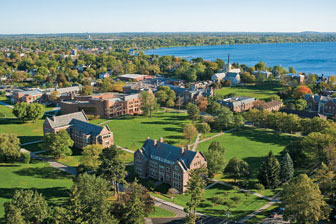
Hobart and William Smith Colleges
The pricing and branding study conducted by A&S gave HWS strategic and tactical recommendations that guided its decision making. Our recommendations, in partnership with strong leadershp in the College’s admissions office, helped the College dramatically improve its enrollment results over the past few years.
Client Challenge
Wake Forest University, among the nation’s top 30 research universities, was considering growing undergraduate enrollment. Wake’s leadership wanted to ensure that enrollment growth would not compromise the quality of students choosing the University or the quality of undergraduate students’ academic and personal experience. Another concern was the financial impact of various enrollment growth scenarios.
Our Approach
The first phase of the project involved developing a number of models to predict the cost of various enrollment growth scenarios in terms of faculty, administrative staff, facilities, and net tuition revenue.
We also conducted highly sophisticated research with non-inquirers, inquirers, and admitted applicants. This research enabled us to develop a predictive model that measured the impact on application conversion rates, yield, student quality, diversity, and net tuition revenue of a number planning initiatives and ideas, including branding strategies, and student-faculty collaboration.
The Results
The feasibility and enrollment study demonstrated conclusively that Wake Forest was in an unusually strong position to grow enrollment without compromising student quality or diversity. Moreover, the University had the flexibility to make changes in its price and aid to increase net revenue without adverse consequences for admissions and enrollment.
As a result of this collaboration and University planning efforts, Wake grew enrollment by 10 percent, created a new admissions welcome center, and built new residence halls. Furthermore, it repositioned itself, based on our recommendations, as the “collegiate university,” an institution that balances the personal attention of a liberal arts college with the academic vitality and broad opportunities of a research university with strong professional schools.
Independent Schools

California Independent School Association
Market positioning workshops conducted for 16 independent schools in northern and southern California helped school leaders and professional staff understand their strategic challenges and how to further strengthen their school's competitive position.
Client Challenge
Wake Forest University, among the nation’s top 30 research universities, was considering growing undergraduate enrollment. Wake’s leadership wanted to ensure that enrollment growth would not compromise the quality of students choosing the University or the quality of undergraduate students’ academic and personal experience. Another concern was the financial impact of various enrollment growth scenarios.
Our Approach
The first phase of the project involved developing a number of models to predict the cost of various enrollment growth scenarios in terms of faculty, administrative staff, facilities, and net tuition revenue.
We also conducted highly sophisticated research with non-inquirers, inquirers, and admitted applicants. This research enabled us to develop a predictive model that measured the impact on application conversion rates, yield, student quality, diversity, and net tuition revenue of a number planning initiatives and ideas, including branding strategies, and student-faculty collaboration.
The Results
The feasibility and enrollment study demonstrated conclusively that Wake Forest was in an unusually strong position to grow enrollment without compromising student quality or diversity. Moreover, the University had the flexibility to make changes in its price and aid to increase net revenue without adverse consequences for admissions and enrollment.
As a result of this collaboration and University planning efforts, Wake grew enrollment by 10 percent, created a new admissions welcome center, and built new residence halls. Furthermore, it repositioned itself, based on our recommendations, as the “collegiate university,” an institution that balances the personal attention of a liberal arts college with the academic vitality and broad opportunities of a research university with strong professional schools.

Durham Academy
The research our firm provided Durham Academy helped the school to not only maintain but also enhance its position as an educational leader in its region.
Client Challenge
Wake Forest University, among the nation’s top 30 research universities, was considering growing undergraduate enrollment. Wake’s leadership wanted to ensure that enrollment growth would not compromise the quality of students choosing the University or the quality of undergraduate students’ academic and personal experience. Another concern was the financial impact of various enrollment growth scenarios.
Our Approach
The first phase of the project involved developing a number of models to predict the cost of various enrollment growth scenarios in terms of faculty, administrative staff, facilities, and net tuition revenue.
We also conducted highly sophisticated research with non-inquirers, inquirers, and admitted applicants. This research enabled us to develop a predictive model that measured the impact on application conversion rates, yield, student quality, diversity, and net tuition revenue of a number planning initiatives and ideas, including branding strategies, and student-faculty collaboration.
The Results
The feasibility and enrollment study demonstrated conclusively that Wake Forest was in an unusually strong position to grow enrollment without compromising student quality or diversity. Moreover, the University had the flexibility to make changes in its price and aid to increase net revenue without adverse consequences for admissions and enrollment.
As a result of this collaboration and University planning efforts, Wake grew enrollment by 10 percent, created a new admissions welcome center, and built new residence halls. Furthermore, it repositioned itself, based on our recommendations, as the “collegiate university,” an institution that balances the personal attention of a liberal arts college with the academic vitality and broad opportunities of a research university with strong professional schools.

Santa Catalina School
The comprehensive study we conducted for Santa Catalina School provided the valuable perspective the School needed to strategically enhance not only marketing and recruitment efforts but also the academic, residential, and extracurricular programming necessary for strengthening it's market and advancement position.
Client Challenge
Wake Forest University, among the nation’s top 30 research universities, was considering growing undergraduate enrollment. Wake’s leadership wanted to ensure that enrollment growth would not compromise the quality of students choosing the University or the quality of undergraduate students’ academic and personal experience. Another concern was the financial impact of various enrollment growth scenarios.
Our Approach
The first phase of the project involved developing a number of models to predict the cost of various enrollment growth scenarios in terms of faculty, administrative staff, facilities, and net tuition revenue.
We also conducted highly sophisticated research with non-inquirers, inquirers, and admitted applicants. This research enabled us to develop a predictive model that measured the impact on application conversion rates, yield, student quality, diversity, and net tuition revenue of a number planning initiatives and ideas, including branding strategies, and student-faculty collaboration.
The Results
The feasibility and enrollment study demonstrated conclusively that Wake Forest was in an unusually strong position to grow enrollment without compromising student quality or diversity. Moreover, the University had the flexibility to make changes in its price and aid to increase net revenue without adverse consequences for admissions and enrollment.
As a result of this collaboration and University planning efforts, Wake grew enrollment by 10 percent, created a new admissions welcome center, and built new residence halls. Furthermore, it repositioned itself, based on our recommendations, as the “collegiate university,” an institution that balances the personal attention of a liberal arts college with the academic vitality and broad opportunities of a research university with strong professional schools.
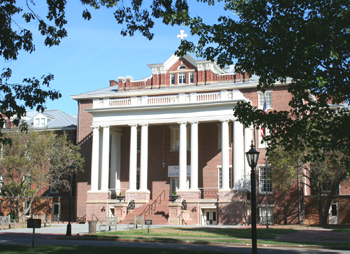
Saint Mary’s School
The School engaged Art & Science Group to create a fundraising plan to strengthen the school's financial foundation and underwrite new programs and facilities for its high school students.
Client Challenge
Wake Forest University, among the nation’s top 30 research universities, was considering growing undergraduate enrollment. Wake’s leadership wanted to ensure that enrollment growth would not compromise the quality of students choosing the University or the quality of undergraduate students’ academic and personal experience. Another concern was the financial impact of various enrollment growth scenarios.
Our Approach
The first phase of the project involved developing a number of models to predict the cost of various enrollment growth scenarios in terms of faculty, administrative staff, facilities, and net tuition revenue.
We also conducted highly sophisticated research with non-inquirers, inquirers, and admitted applicants. This research enabled us to develop a predictive model that measured the impact on application conversion rates, yield, student quality, diversity, and net tuition revenue of a number planning initiatives and ideas, including branding strategies, and student-faculty collaboration.
The Results
The feasibility and enrollment study demonstrated conclusively that Wake Forest was in an unusually strong position to grow enrollment without compromising student quality or diversity. Moreover, the University had the flexibility to make changes in its price and aid to increase net revenue without adverse consequences for admissions and enrollment.
As a result of this collaboration and University planning efforts, Wake grew enrollment by 10 percent, created a new admissions welcome center, and built new residence halls. Furthermore, it repositioned itself, based on our recommendations, as the “collegiate university,” an institution that balances the personal attention of a liberal arts college with the academic vitality and broad opportunities of a research university with strong professional schools.
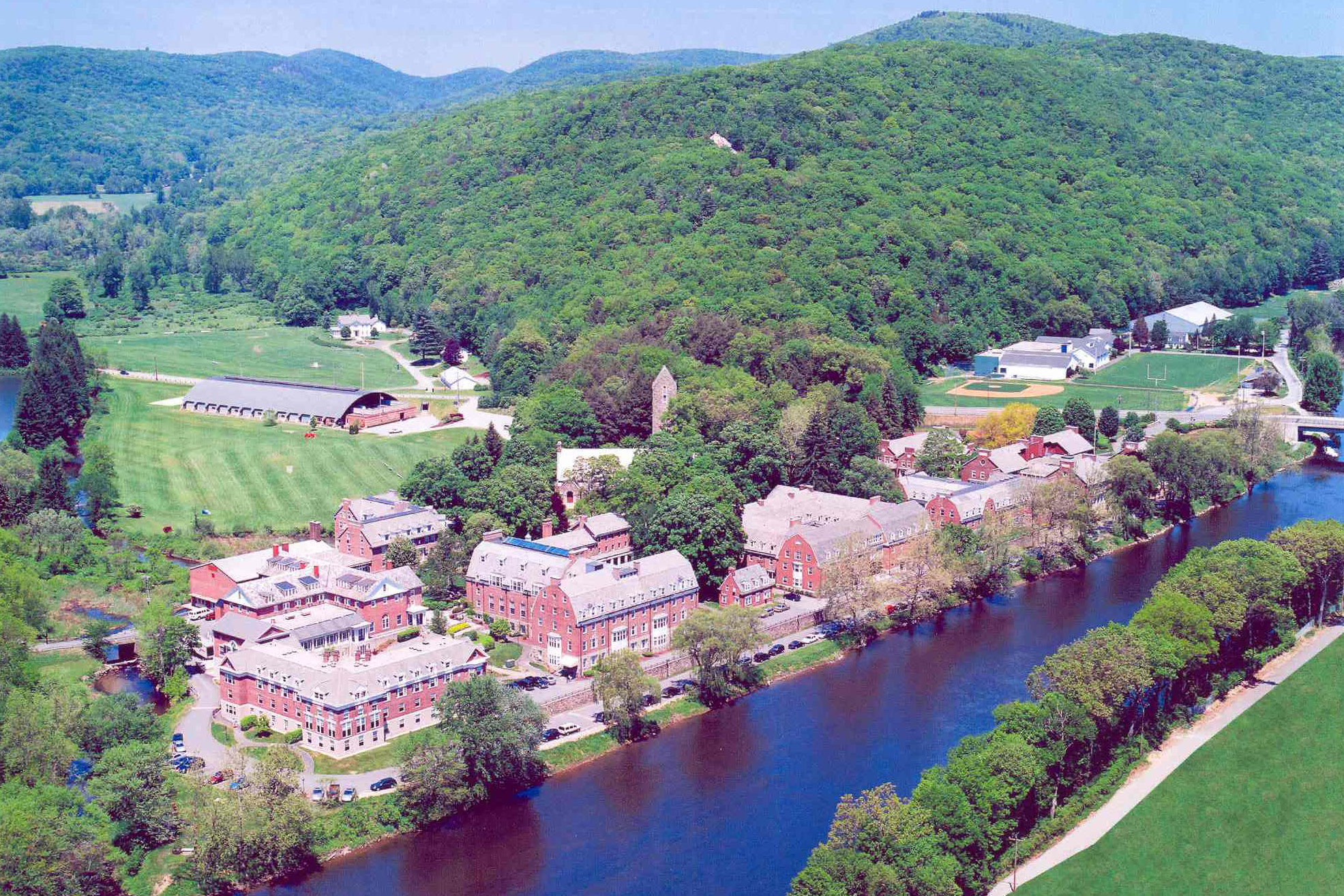
Kent School
Our firm has had a long relationship with Kent, conducting three studies that helped inform and shape its strategy over time as it strengthened its competitive position among leading American boarding schools..
Client Challenge
Wake Forest University, among the nation’s top 30 research universities, was considering growing undergraduate enrollment. Wake’s leadership wanted to ensure that enrollment growth would not compromise the quality of students choosing the University or the quality of undergraduate students’ academic and personal experience. Another concern was the financial impact of various enrollment growth scenarios.
Our Approach
The first phase of the project involved developing a number of models to predict the cost of various enrollment growth scenarios in terms of faculty, administrative staff, facilities, and net tuition revenue.
We also conducted highly sophisticated research with non-inquirers, inquirers, and admitted applicants. This research enabled us to develop a predictive model that measured the impact on application conversion rates, yield, student quality, diversity, and net tuition revenue of a number planning initiatives and ideas, including branding strategies, and student-faculty collaboration.
The Results
The feasibility and enrollment study demonstrated conclusively that Wake Forest was in an unusually strong position to grow enrollment without compromising student quality or diversity. Moreover, the University had the flexibility to make changes in its price and aid to increase net revenue without adverse consequences for admissions and enrollment.
As a result of this collaboration and University planning efforts, Wake grew enrollment by 10 percent, created a new admissions welcome center, and built new residence halls. Furthermore, it repositioned itself, based on our recommendations, as the “collegiate university,” an institution that balances the personal attention of a liberal arts college with the academic vitality and broad opportunities of a research university with strong professional schools.

Maumee Valley Country Day School
The study we conducted for Maumee Valley Country Day School helped the School identify ways to strengthen its market position and appeal in the greater Toledo area. It resulted in a dramatic shift in the School's positioning and more strongly linked its educational focus and communications..
Client Challenge
Wake Forest University, among the nation’s top 30 research universities, was considering growing undergraduate enrollment. Wake’s leadership wanted to ensure that enrollment growth would not compromise the quality of students choosing the University or the quality of undergraduate students’ academic and personal experience. Another concern was the financial impact of various enrollment growth scenarios.
Our Approach
The first phase of the project involved developing a number of models to predict the cost of various enrollment growth scenarios in terms of faculty, administrative staff, facilities, and net tuition revenue.
We also conducted highly sophisticated research with non-inquirers, inquirers, and admitted applicants. This research enabled us to develop a predictive model that measured the impact on application conversion rates, yield, student quality, diversity, and net tuition revenue of a number planning initiatives and ideas, including branding strategies, and student-faculty collaboration.
The Results
The feasibility and enrollment study demonstrated conclusively that Wake Forest was in an unusually strong position to grow enrollment without compromising student quality or diversity. Moreover, the University had the flexibility to make changes in its price and aid to increase net revenue without adverse consequences for admissions and enrollment.
As a result of this collaboration and University planning efforts, Wake grew enrollment by 10 percent, created a new admissions welcome center, and built new residence halls. Furthermore, it repositioned itself, based on our recommendations, as the “collegiate university,” an institution that balances the personal attention of a liberal arts college with the academic vitality and broad opportunities of a research university with strong professional schools.

The Association of Boarding Schools
TABS sought the firm’s expertise to conduct a study of students and alumni of boarding and other schools to explore the value and benefits of that educational experience. The findings of the study served as the foundation for an effective public relations campaign launched by TABS and its member schools.
Client Challenge
Wake Forest University, among the nation’s top 30 research universities, was considering growing undergraduate enrollment. Wake’s leadership wanted to ensure that enrollment growth would not compromise the quality of students choosing the University or the quality of undergraduate students’ academic and personal experience. Another concern was the financial impact of various enrollment growth scenarios.
Our Approach
The first phase of the project involved developing a number of models to predict the cost of various enrollment growth scenarios in terms of faculty, administrative staff, facilities, and net tuition revenue.
We also conducted highly sophisticated research with non-inquirers, inquirers, and admitted applicants. This research enabled us to develop a predictive model that measured the impact on application conversion rates, yield, student quality, diversity, and net tuition revenue of a number planning initiatives and ideas, including branding strategies, and student-faculty collaboration.
The Results
The feasibility and enrollment study demonstrated conclusively that Wake Forest was in an unusually strong position to grow enrollment without compromising student quality or diversity. Moreover, the University had the flexibility to make changes in its price and aid to increase net revenue without adverse consequences for admissions and enrollment.
As a result of this collaboration and University planning efforts, Wake grew enrollment by 10 percent, created a new admissions welcome center, and built new residence halls. Furthermore, it repositioned itself, based on our recommendations, as the “collegiate university,” an institution that balances the personal attention of a liberal arts college with the academic vitality and broad opportunities of a research university with strong professional schools.
Law Schools

Washington University Law School
Our firm conducted two projects for the School of Law, both focused on helping it develop and pursue a marketing strategy to elevate its competitive position both regionally and nationally.
Client Challenge
Wake Forest University, among the nation’s top 30 research universities, was considering growing undergraduate enrollment. Wake’s leadership wanted to ensure that enrollment growth would not compromise the quality of students choosing the University or the quality of undergraduate students’ academic and personal experience. Another concern was the financial impact of various enrollment growth scenarios.
Our Approach
The first phase of the project involved developing a number of models to predict the cost of various enrollment growth scenarios in terms of faculty, administrative staff, facilities, and net tuition revenue.
We also conducted highly sophisticated research with non-inquirers, inquirers, and admitted applicants. This research enabled us to develop a predictive model that measured the impact on application conversion rates, yield, student quality, diversity, and net tuition revenue of a number planning initiatives and ideas, including branding strategies, and student-faculty collaboration.
The Results
The feasibility and enrollment study demonstrated conclusively that Wake Forest was in an unusually strong position to grow enrollment without compromising student quality or diversity. Moreover, the University had the flexibility to make changes in its price and aid to increase net revenue without adverse consequences for admissions and enrollment.
As a result of this collaboration and University planning efforts, Wake grew enrollment by 10 percent, created a new admissions welcome center, and built new residence halls. Furthermore, it repositioned itself, based on our recommendations, as the “collegiate university,” an institution that balances the personal attention of a liberal arts college with the academic vitality and broad opportunities of a research university with strong professional schools.
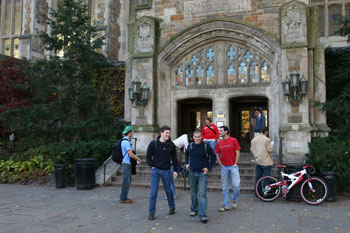
University of Michigan Law
After developing campaign strategy for the University of Michigan Law School, Art & Science subsequently conducted quantitative studies of alumni and prospective students and addressed board relations, alumni relations, and communications.
Client Challenge
Wake Forest University, among the nation’s top 30 research universities, was considering growing undergraduate enrollment. Wake’s leadership wanted to ensure that enrollment growth would not compromise the quality of students choosing the University or the quality of undergraduate students’ academic and personal experience. Another concern was the financial impact of various enrollment growth scenarios.
Our Approach
The first phase of the project involved developing a number of models to predict the cost of various enrollment growth scenarios in terms of faculty, administrative staff, facilities, and net tuition revenue.
We also conducted highly sophisticated research with non-inquirers, inquirers, and admitted applicants. This research enabled us to develop a predictive model that measured the impact on application conversion rates, yield, student quality, diversity, and net tuition revenue of a number planning initiatives and ideas, including branding strategies, and student-faculty collaboration.
The Results
The feasibility and enrollment study demonstrated conclusively that Wake Forest was in an unusually strong position to grow enrollment without compromising student quality or diversity. Moreover, the University had the flexibility to make changes in its price and aid to increase net revenue without adverse consequences for admissions and enrollment.
As a result of this collaboration and University planning efforts, Wake grew enrollment by 10 percent, created a new admissions welcome center, and built new residence halls. Furthermore, it repositioned itself, based on our recommendations, as the “collegiate university,” an institution that balances the personal attention of a liberal arts college with the academic vitality and broad opportunities of a research university with strong professional schools.
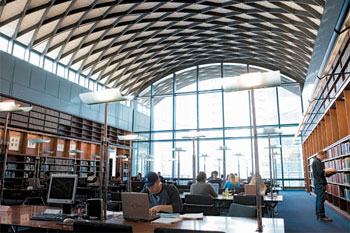
Chicago-Kent College of Law
In the process of developing its strategic plan focused on strengthening its competitive position, the law school sought our firm’s expertise to provide the empirical market evidence needed to make sound planning decisions.
Client Challenge
Wake Forest University, among the nation’s top 30 research universities, was considering growing undergraduate enrollment. Wake’s leadership wanted to ensure that enrollment growth would not compromise the quality of students choosing the University or the quality of undergraduate students’ academic and personal experience. Another concern was the financial impact of various enrollment growth scenarios.
Our Approach
The first phase of the project involved developing a number of models to predict the cost of various enrollment growth scenarios in terms of faculty, administrative staff, facilities, and net tuition revenue.
We also conducted highly sophisticated research with non-inquirers, inquirers, and admitted applicants. This research enabled us to develop a predictive model that measured the impact on application conversion rates, yield, student quality, diversity, and net tuition revenue of a number planning initiatives and ideas, including branding strategies, and student-faculty collaboration.
The Results
The feasibility and enrollment study demonstrated conclusively that Wake Forest was in an unusually strong position to grow enrollment without compromising student quality or diversity. Moreover, the University had the flexibility to make changes in its price and aid to increase net revenue without adverse consequences for admissions and enrollment.
As a result of this collaboration and University planning efforts, Wake grew enrollment by 10 percent, created a new admissions welcome center, and built new residence halls. Furthermore, it repositioned itself, based on our recommendations, as the “collegiate university,” an institution that balances the personal attention of a liberal arts college with the academic vitality and broad opportunities of a research university with strong professional schools.
Other

National Institute of Statistical Sciences (NISS)
NISS retained Art & Science to better understand the institute’s market position from the perspective of current constituents, and to explore the interests and motivations of potential donors.
Client Challenge
Wake Forest University, among the nation’s top 30 research universities, was considering growing undergraduate enrollment. Wake’s leadership wanted to ensure that enrollment growth would not compromise the quality of students choosing the University or the quality of undergraduate students’ academic and personal experience. Another concern was the financial impact of various enrollment growth scenarios.
Our Approach
The first phase of the project involved developing a number of models to predict the cost of various enrollment growth scenarios in terms of faculty, administrative staff, facilities, and net tuition revenue.
We also conducted highly sophisticated research with non-inquirers, inquirers, and admitted applicants. This research enabled us to develop a predictive model that measured the impact on application conversion rates, yield, student quality, diversity, and net tuition revenue of a number planning initiatives and ideas, including branding strategies, and student-faculty collaboration.
The Results
The feasibility and enrollment study demonstrated conclusively that Wake Forest was in an unusually strong position to grow enrollment without compromising student quality or diversity. Moreover, the University had the flexibility to make changes in its price and aid to increase net revenue without adverse consequences for admissions and enrollment.
As a result of this collaboration and University planning efforts, Wake grew enrollment by 10 percent, created a new admissions welcome center, and built new residence halls. Furthermore, it repositioned itself, based on our recommendations, as the “collegiate university,” an institution that balances the personal attention of a liberal arts college with the academic vitality and broad opportunities of a research university with strong professional schools.
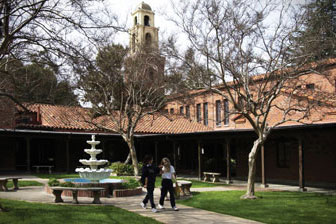
The Wesley School
A positioning and marketing study we conducted for the Wesley School helped the community reach a consensus about its strategic direction and priorities and set the School on a path to implement changes critical to its future.
Client Challenge
Wake Forest University, among the nation’s top 30 research universities, was considering growing undergraduate enrollment. Wake’s leadership wanted to ensure that enrollment growth would not compromise the quality of students choosing the University or the quality of undergraduate students’ academic and personal experience. Another concern was the financial impact of various enrollment growth scenarios.
Our Approach
The first phase of the project involved developing a number of models to predict the cost of various enrollment growth scenarios in terms of faculty, administrative staff, facilities, and net tuition revenue.
We also conducted highly sophisticated research with non-inquirers, inquirers, and admitted applicants. This research enabled us to develop a predictive model that measured the impact on application conversion rates, yield, student quality, diversity, and net tuition revenue of a number planning initiatives and ideas, including branding strategies, and student-faculty collaboration.
The Results
The feasibility and enrollment study demonstrated conclusively that Wake Forest was in an unusually strong position to grow enrollment without compromising student quality or diversity. Moreover, the University had the flexibility to make changes in its price and aid to increase net revenue without adverse consequences for admissions and enrollment.
As a result of this collaboration and University planning efforts, Wake grew enrollment by 10 percent, created a new admissions welcome center, and built new residence halls. Furthermore, it repositioned itself, based on our recommendations, as the “collegiate university,” an institution that balances the personal attention of a liberal arts college with the academic vitality and broad opportunities of a research university with strong professional schools.

WebAssign
WebAssign’s leadership engaged Art & Science to explore how the organization could adapt its corporate culture without sacrificing the strong sense of its original mission while realizing its significant potential as a social enterprise serving university students and teachers.
Client Challenge
Wake Forest University, among the nation’s top 30 research universities, was considering growing undergraduate enrollment. Wake’s leadership wanted to ensure that enrollment growth would not compromise the quality of students choosing the University or the quality of undergraduate students’ academic and personal experience. Another concern was the financial impact of various enrollment growth scenarios.
Our Approach
The first phase of the project involved developing a number of models to predict the cost of various enrollment growth scenarios in terms of faculty, administrative staff, facilities, and net tuition revenue.
We also conducted highly sophisticated research with non-inquirers, inquirers, and admitted applicants. This research enabled us to develop a predictive model that measured the impact on application conversion rates, yield, student quality, diversity, and net tuition revenue of a number planning initiatives and ideas, including branding strategies, and student-faculty collaboration.
The Results
The feasibility and enrollment study demonstrated conclusively that Wake Forest was in an unusually strong position to grow enrollment without compromising student quality or diversity. Moreover, the University had the flexibility to make changes in its price and aid to increase net revenue without adverse consequences for admissions and enrollment.
As a result of this collaboration and University planning efforts, Wake grew enrollment by 10 percent, created a new admissions welcome center, and built new residence halls. Furthermore, it repositioned itself, based on our recommendations, as the “collegiate university,” an institution that balances the personal attention of a liberal arts college with the academic vitality and broad opportunities of a research university with strong professional schools.

